Aesthetic Exploration: Impressionism
Starting in the late 1860s, a group of artists met regularly in a modernizing Paris to discuss new painting techniques that would stem away from the popular realism style that was taught in Paris art schools at the time. The realist paintings were put on display in the annual exhibition titled the Salon, which was juried by a panel of artists from the Academie des Beaux-Arts. The new painting style that was being developed by the group during this time was consistently rejected from the Salon each year for reasons which included they had an unfinished, sketch-like appearance. The group’s unification was held together by the fact that they were all rejected from the annual showcase, which eventually led them to start their own galleries in 1874. At the time they called themselves the Anonymous Society of Painters, Sculptors, and Printmakers. Today we know this group as the Impressionists, with names of many influential artists that are still discussed today and whose pieces of art are displayed 150 years later. This group includes, but is not limited to Pierre-Auguste Renoir, Claude Monet, Camille Pissaro, Edgar Degas, Mary Cassatt, and Paul Cezanne (1).
Impressionism was a response and rejection to realism, in which artists typically painted historical or mythological scenes with the utmost detail. These artists instead used short broken up brush strokes with pure unmixed and mixed color to capture their surroundings (2). They painted scenes as they experienced them, trying to capture what they felt in that moment. This was unconventional at the time. In a way this art style seems to capture a scene as well as the passage of time in a place with this painting style.
Multiple factors led to this aesthetic taking place and being possible.
Landscape painting became increasingly popular during the mid 19th century which led to artists painting outside, called “en plein-air”. Previously, artists spent most of their time working in an art studio.
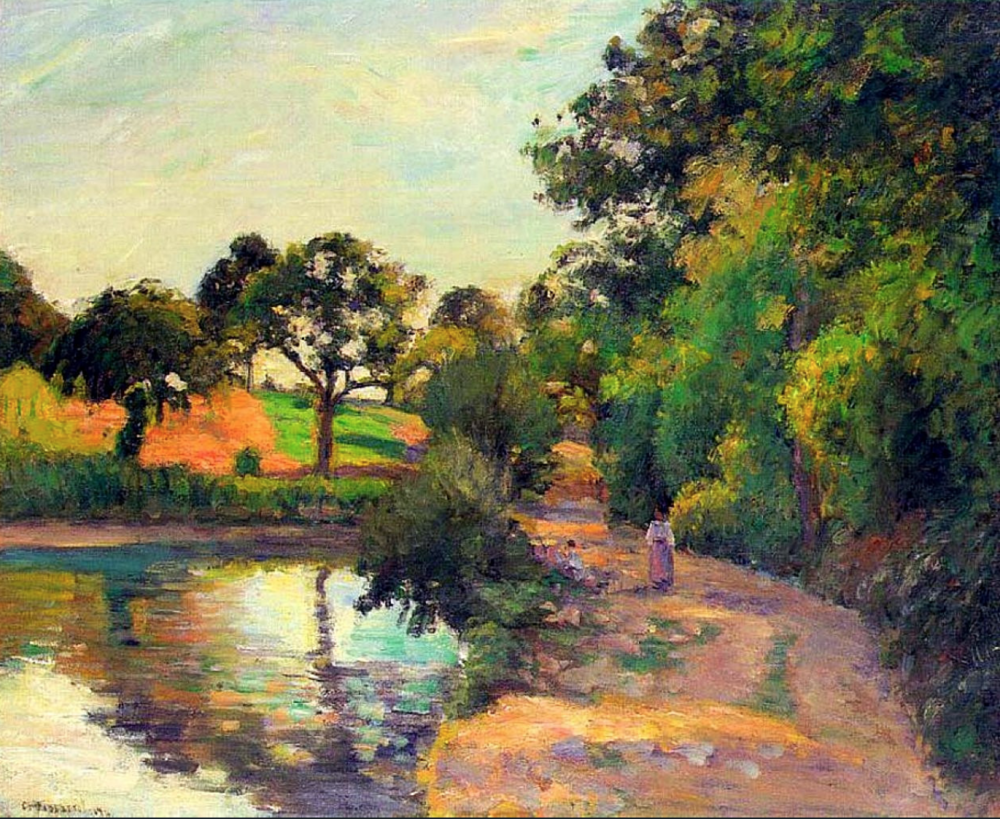
Camille Pissarro, Bridge at Montfoucault (1874)
Paris was transforming during this time as well. Paris was a bleak place in the early 19th century. From 1853 to 1870, a renovation of Paris, as ordered by Napoleon III led to the development of new buildings, city squares, streets, and other infrastructure (3). This and a population boom attracted more people from various social classes to work and live in the city. The impressionist group painted new forms of leisure among the different classes which included theatrical entertainment, cafes. popular concerts, and dances. Different painting techniques developed out of choosing these subjects to paint. One example of this is that these painters would often paint in the evening and would then use “effects de soir” in which dim lighting effects were emphasized. This is especially seen in Degas’ “At the Cafe des Ambassadeurs” pictured below.
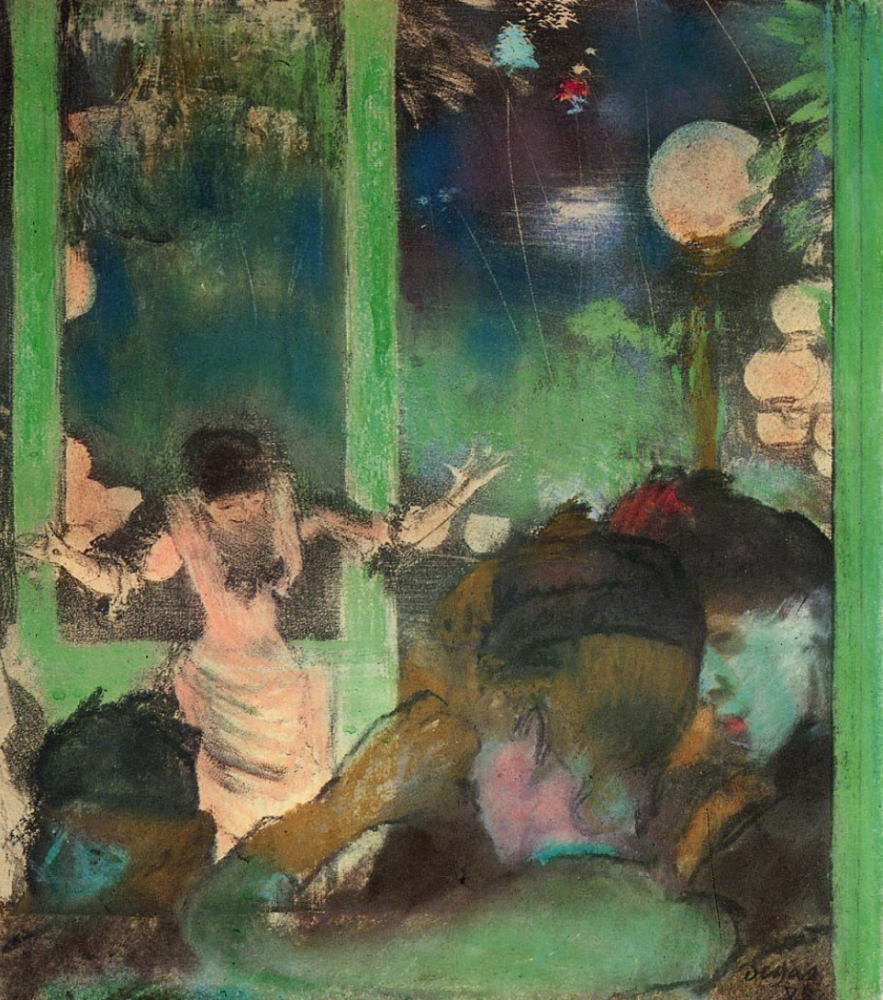
Edgar Degas, At the Cafe des Ambassadeurs (1885)
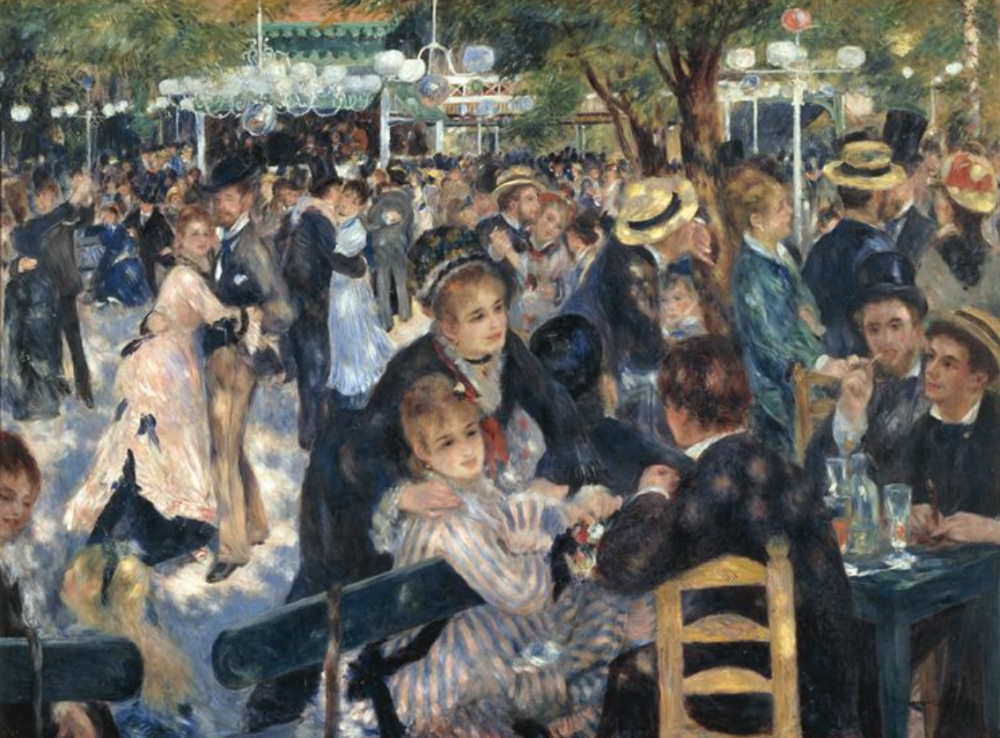
Pierre-Auguste Renoir, Dance at Moulin de la Galette (1876)
An innovation that influenced this movement was the relatively new train system that was developed that made it easier to travel in and out of Paris. This made it easier to live in Paris as an artist and travel to the countryside for shorter trips of plein-air painting. Another item worth noting is that the tube of paint, which was invented in 1841 made it easier to work with paint and mix colors while being out of an art studio. More vibrant colors were also available due to new chemical extraction methods (4).
This movement inspired future art forms by specific painting techniques and painting based on feelings rather than specific details like styles that had come before in the 18th to 19th centuries such as romanticism and realism. Painting feelings motivated artists within the expressionist movement of the early 1900s and artists that came afterwards. The short-thick brush strokes inspired avant-garde artists in the late 19th century such as Vincent Van Gogh. Bolder colors used by the impressionists can be thought to encourage fauvism, in which artists favored bold colors over realistic colors.
I would say the element that has persisted and influenced other movements the most is taking art out of the realistic sphere, so to speak and putting it in a place that is half real and half dream like. I believe this encouraged other artists to continue to push boundaries outside of capturing scenes in a realistic manner.
I chose this aesthetic movement for several reasons. Over the years at several different museums, I have walked into a gallery showing paintings from the Impressionists and I notice myself losing myself in the art. There is something about how the paintings and pastel work capture motion in one scene that makes me feel like my imagination can fill in the rest of what the scene could be like before or after the moment is captured. I also chose it because I believe this is one of the most significant forms of art that is able to encapsulate the human experience with scenes that seem to move with time, vibrant colors, and images that bring out a range of emotions.
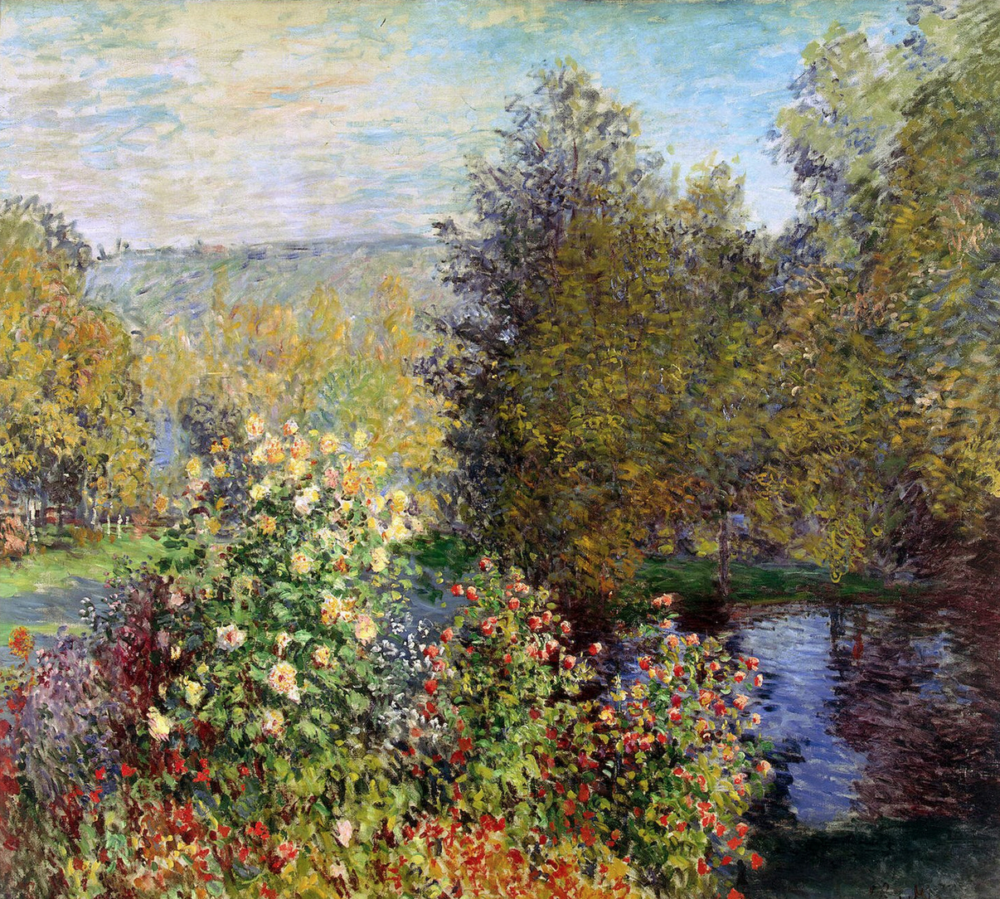
Claude Monet, A Corner of the Garden at Montgeron (1877)
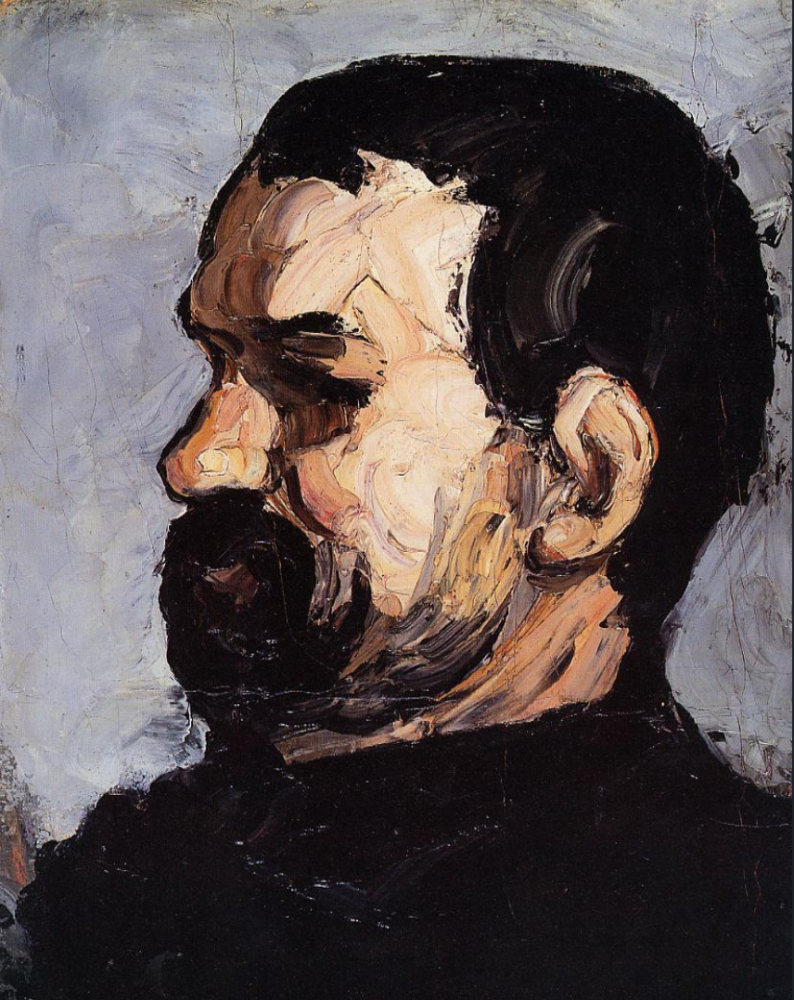
Paul Cezzane, Portrait of Uncle Dominique in Profile (1866)
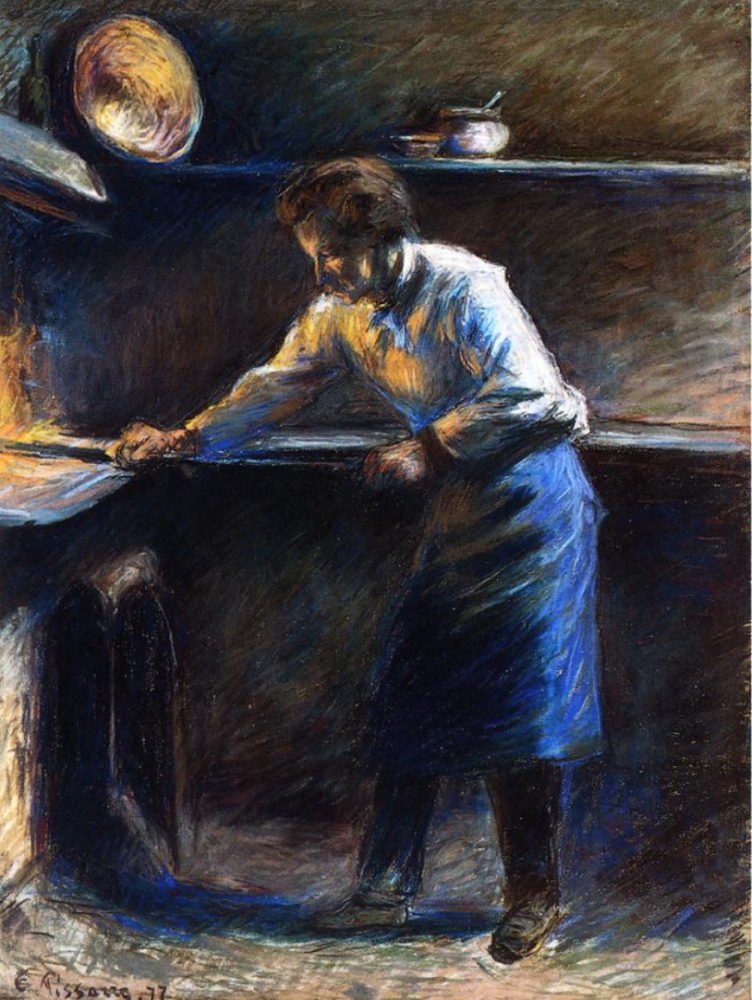
Camille Pissarro, Eugene Murer at his Pastry Oven (1877)
References
- Samu, Margaret. “Impressionism: Art and Modernity.” In Heilbrunn Timeline of Art History. New York: The Metropolitan Museum of Art, 2000–. http://www.metmuseum.org/toah/hd/imml/hd_imml.htm (October 2004)
- White, Harrison C., Cynthia A. White (1993). Canvases and Careers: Institutional Change in the French Painting World Archived 12 November 2022 at the Wayback Machine. University of Chicago Press. p. 116. ISBN 0-226-89487-8.
- Pinkney, David H. Napoleon III and the Rebuilding of Paris (Princeton University Press, 1958)
- Harskamp, Jaap. “Paint Tubes, Plein Air and Protest”. https://www.newyorkalmanack.com/2021/11/paint-tubes-plein-air-and-protest/

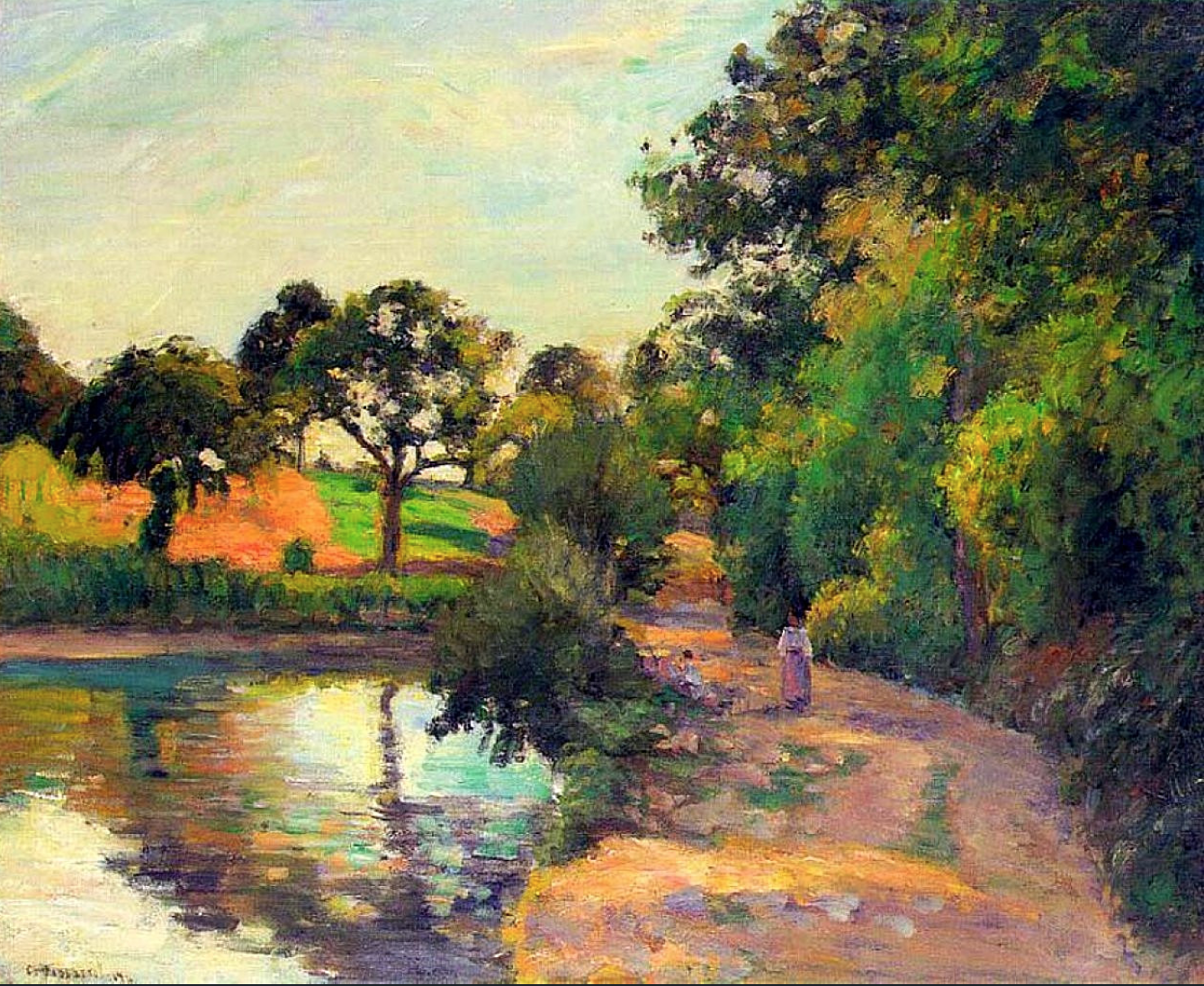
6 Comments. Leave new
I am a huge fan of the impressionist movement and I appreciate how in-depth you went in your explanation of how it started and its major influences. I also thought that the fact about how the new train system contributed to the spread of the overall movement was cool and was not at all something I would have considered. I was wondering how this movement inspired other art forms and aesthetics and what elements of the impressionist movement have persisted and influenced other movements the most?
Hi Max, great questions!
To answer your first question, this movement inspired future art forms by specific painting techniques and painting based on feelings rather than specific details like styles that had come before in the 18th to 19th centuries such as romanticism and realism. Painting feelings motivated artists within the expressionist movement of the early 1900s and artists that came afterwards. The short-thick brush strokes inspired avant-garde artists in the late 19th century such as Vincent Van Gogh. Bolder colors used by the impressionists can be thought to encourage fauvism, in which artists favored bold colors over realistic colors.
I would say the element that has persisted and influenced other movements the most is taking art out of the realistic sphere, so to speak and putting it in a place that is half real and half dream like. I believe this encouraged other artists to continue to push boundaries outside of capturing scenes in a realistic manner.
Hi Ben,
I’m impressed with how you captured Impressionism’s essence, using specific art examples. To further enrich your post, You might consider delving into how social changes shaped the movement and its innovative techniques, adding even more depth to your exploration.
Hello Grreshan, thanks for the feedback. I will add more information along those lines to my post.
I have always loved the impressionism movement and thought your explanation of it was great. Like you, I also really enjoy the emotions and movement that result from this art style. I was wondering if you ever looked into the ballet dances that Degas like to paint? Those were the first impressionist paintings that I remember seeing which made me become an impressionist period fan!
Hi Kyra! I have seen those. I first saw them on display at the Norton Simon Museum in Pasadena, CA. Did you see those in an exhibit or online?